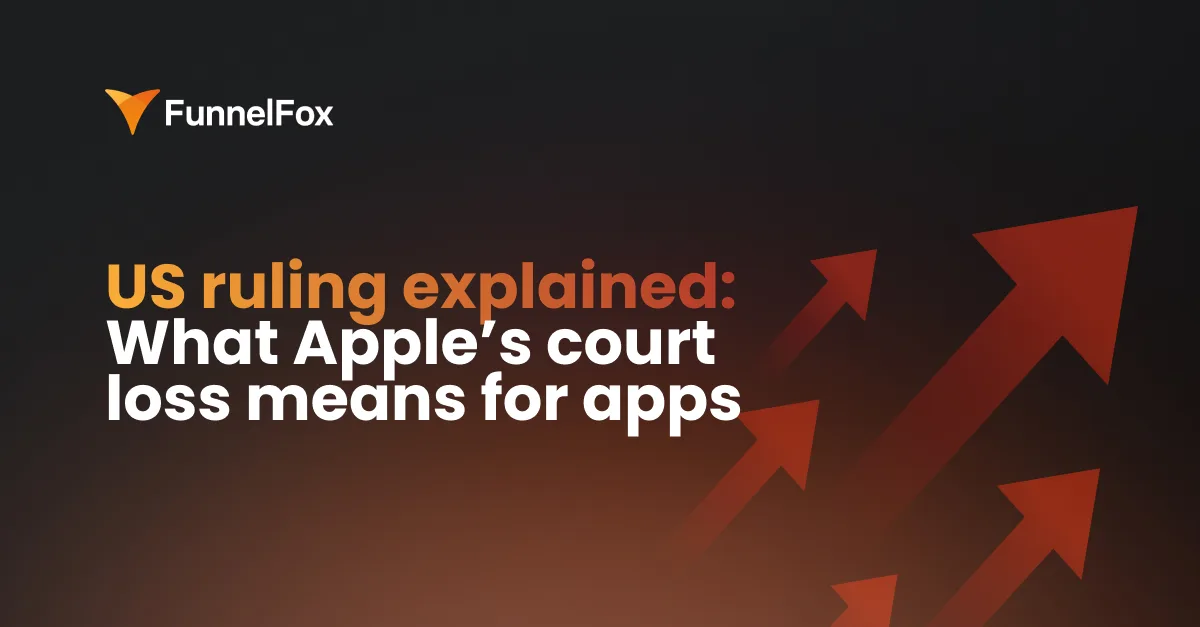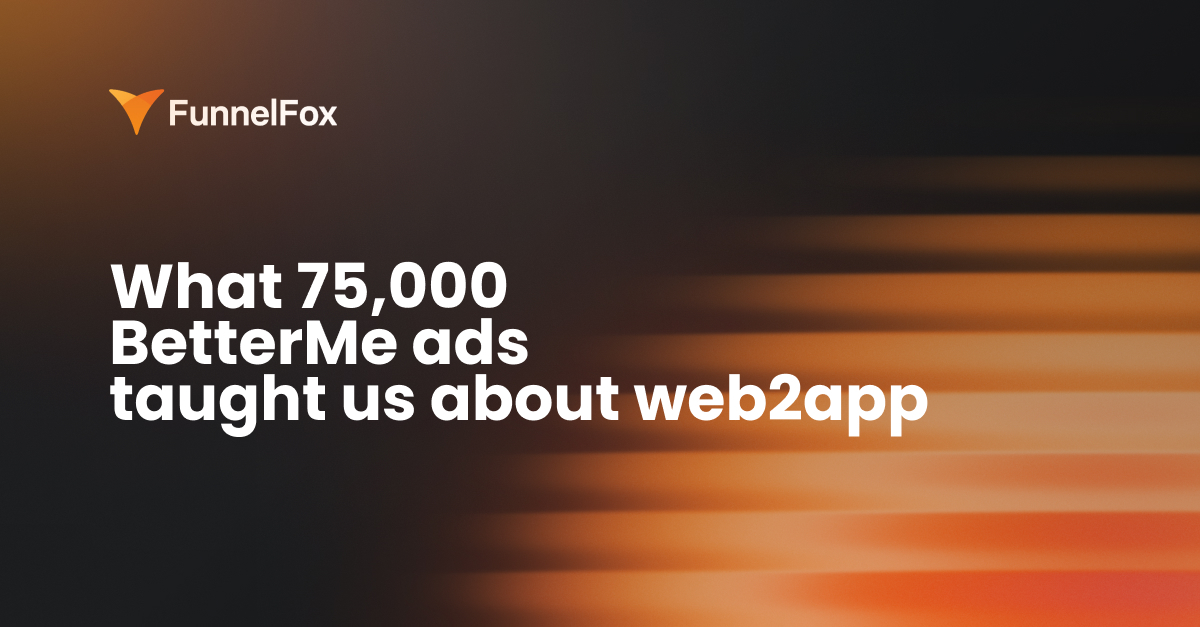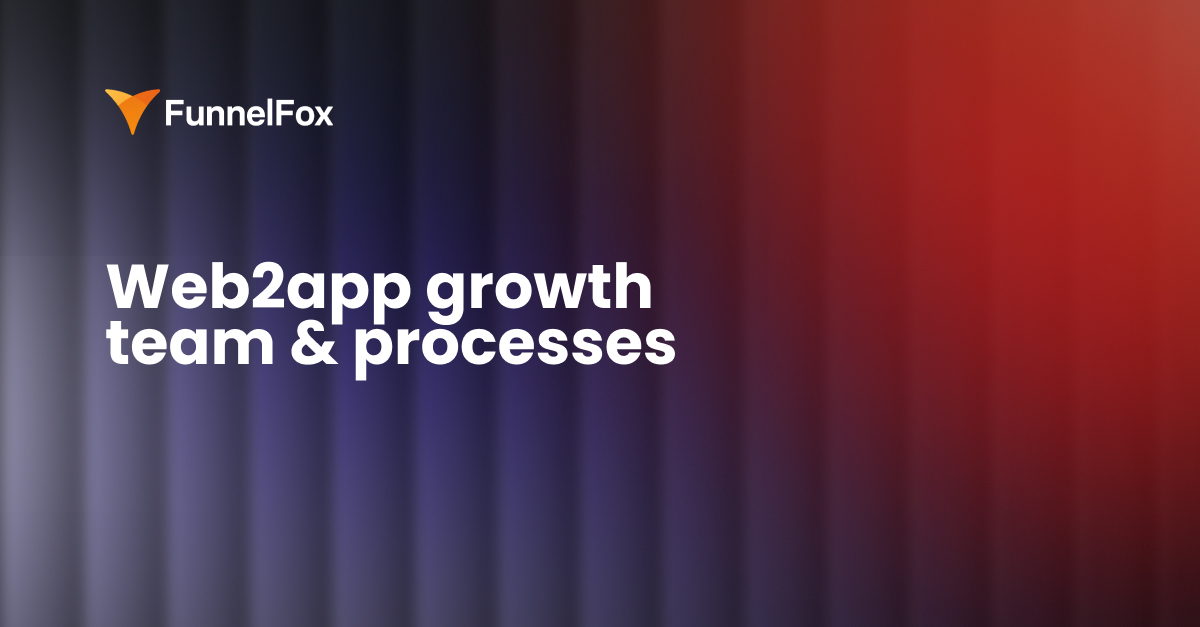US court ruling forced Apple to allow external payment links in iOS apps, so we at FunnelFox brought together a group of industry experts for a last-minute roundtable. Our goal: to understand what this decision really means for developers, and what comes next.
Here’s who joined the conversation:

This article captures the key takeaways from that discussion: what’s changed, what to consider before acting, tax hurdles, technical implementation, monetization models, and how this shift could affect mobile growth.
You can also watch the full recording of the conversation — find it at the end of this article.
What actually changed?
Apple now has to let US developers send users from their apps to third-party payment websites. This goes way beyond earlier EU exceptions that were riddled with friction and rarely used.
The idea of allowing external payments in iOS apps has been floating around for years. There have been changes in Europe — some countries, like the Netherlands, have technically allowed developers to use their own billing systems. But it didn’t go far: Apple put up enough friction — extra steps, warnings, high commissions — that most developers didn’t bother.
Then the Apple vs Epic ruling in the US made things very real. Apple is now required to let developers redirect users from their iOS apps to third-party websites via external payment links — and not sometime in the future, but immediately.
The anti-steering policy that kept external billing at arm’s length is gone (at least for now). And with that, developers suddenly have payment options for iOS apps that didn’t exist before: options that could change how they monetize, how they acquire users, and how they build their businesses.
Apple Pay vs. IAP: same flow, different game
One of the first questions developers will face is: if I switch from Apple’s in-app purchase (IAP) system to Apple Pay or web payments, will users notice? The short answer is — probably not.
From a user’s perspective, the process is the same: a tap, Face ID, done. But for developers, it’s an entirely different system: faster, more flexible, and far more demanding. Apple Pay isn’t part of the App Store payment infrastructure — it’s a standalone payment method, which means the developer becomes the merchant of record and takes full responsibility for processing, compliance, and support.
External payments also come with something many developers have long wanted: real customer data. Full names, billing details, email addresses — not anonymized fragments, but something you can use. And that changes the entire dynamic: developers can now build their own retention flows and custom checkout, send invoices directly, and manage churn and subscriptions on their terms.
The tax reality check: more freedom, but more headaches
Switching away from Apple’s in-app purchase system means taking back control — but also taking on everything Apple used to handle for you. And managing taxes is one of the biggest challenges here.
In the App Store, Apple automatically calculates, collects, and remits sales tax based on where the customer lives. But when you move payments to the web, all of that lands on your plate.
And it’s not just registration. Every state has its own rules, thresholds, and processes for tax reporting, many require separate filings. Some states prefer showing tax as a line item on the checkout, rather than including it in the price. If you’re used to handling VAT in the EU, this can feel like stepping into a regulatory maze. For many developers, especially those outside the US, this is where the real work begins.
Attribution and user data
One of the most immediate advantages of moving payments outside the App Store is the return of visibility. When billing happens on the web checkout, you’re no longer locked into Apple’s attribution limits or anonymized user data.
With web-based payments, events like purchases, cancellations, and upgrades can be tracked in real time through server-side APIs. This brings back the kind of granular control marketers used to have before ATT and SKAdNetwork.
It also reopens access to first-party data. With in-app purchases, developers often get masked emails or limited customer info. But third-party payments mean you collect actual email addresses, payment records, and user identifiers — data you can use for segmentation, retention, and personalized marketing. That’s a level of agility most developers haven’t had in years.
And there’s a competitive edge, too. Since billing happens off-platform, tools like Sensor Tower or AppMagic can’t track your performance — no more public benchmarks and copycat pricing.
Monetization options multiply — and so do the trade-offs
With the ruling now in effect, developers essentially have three ways to monetize on iOS:
- Stick with traditional in-app purchases (IAP) — seamless for users, but expensive.
- Use third-party payments inside the app — either via Apple Pay or a redirect to a web checkout in iOS apps.
- Build full web2app funnels — acquire and convert users on the web before they ever install the app.
Each path — IAP vs external payment links — comes with its own mix of pros, risks, and complexities.
“This isn’t free money. You’re gaining control, but also taking on more complexity.”
— Olha
One of the clearest benefits of third-party payments on iOS is the improved margin — you can keep 100% of revenue (minus processor fees), instead of losing 30% to Apple. But in exchange, developers now manage refunds, taxes, subscription logic, and customer support (though tools like Stripe / Paddle for iOS apps already help cover a big part of that workload). The panel emphasized that this is not a flip-the-switch kind of change. It’s infrastructure work.
And then there’s Apple itself: they’ve updated the App Store guidelines, but they still control distribution. That means they can enforce new rules, tighten review policies, and respond however they see fit.
“They can reject apps for any reason. Apple still owns the front door to the App Store.”
— John, Singular
There’s also a need for real caution around UX and trust. If users struggle to cancel or get confused by inconsistent billing labels, chargebacks and support tickets will spike.
“Making it as easy as possible to cancel is super important.”
— Robbie, Paddle
This is especially true now that third-party payments bring a greater risk of abuse. Poor flows, confusing pricing, or hard-to-cancel subscriptions could hurt everyone if trust in non-IAP methods starts to break down.
For thoughtful developers, though, it’s a chance to build better experiences, tailored offers, and customer-friendly flows that wouldn’t be possible under Apple’s old rules.
Pricing, CAC, and a whole new competitive landscape
The moment the App Store commission drops from 30% to zero (or close to it), the math changes: developers suddenly have more money to reinvest, which can completely shift how they approach growth.
That extra margin opens up options. Developers can afford to pay more to acquire users, run broader campaigns, test more expensive channels, and overall build a more agile iOS app monetization strategy. In the short term, this could push CAC higher across the board.
“Expect CAC to spike, then normalize.”
— John, Singular
At the same time, third-party payments mean developers no longer need to wait 30+ days for Apple’s monthly payouts. They can get funds faster and reinvest that revenue into new acquisition way more quickly.
The same goes for pricing, which is no longer limited by Apple’s fixed tiers. Developers can now test any price point, for any segment, with as much granularity as they want — whether it’s $5.99 or $59.99, a flat rate or a team-based plan.
And that freedom extends beyond price. Some developers are already shifting toward B2B and team-based models, offering billing per seat, bundles, or usage-based tiers (something that simply wasn’t practical within Apple’s old framework). And with full control over pricing, developers can design offers that match how different segments buy.
“You can do seat-based pricing. Sell to teams. It opens up a whole new vertical.”
— Robbie, Paddle
What Apple might do next — and what developers should be ready for
While the court ruling permits external payment links, Apple still controls the platform itself — its policies, its review process, and how apps reach users. And the panel agreed: Apple isn’t likely to stay quiet for long.
One likely path is tightening the App Store review guidelines. If Apple can’t stop the use of external payment links in iOS apps, it may start scrutinizing apps more closely for UX issues, unclear pricing, or negative reviews tied to external billing that make it harder to pass App Store review.
“They’ll change their guidelines and it’ll be stricter. There’ll be a lot of dark patterns from the market, and they should somehow control it.”
— Kirill, webfunnels.club
One possible response is for Apple to make IAP more attractive by lowering commissions, potentially across the board, or specifically for developers who offer external payment links. Rates could drop to 15% or even lower.
Apple could also explore entirely new monetization models — like usage-based pricing, higher developer program fees, or licensing tiers based on app revenue and user volume.
Whatever the direction, it’s unlikely to happen overnight. Apple may move slowly and cautiously to avoid triggering further regulatory action, especially with US authorities already watching closely.
“Shift to external payments gives developers more freedom and flexibility — but also more responsibility.”
— Andrey, FunnelFox
In the meantime, developers have a rare window — quite narrow, though — to act fast, experiment boldly, and get ahead of whatever new terms may come next.
Conclusion
This court ruling marks more than a legal shift — it’s a structural change in App Store monetization and how iOS apps can grow, monetize, and build lasting relationships with their users. With payment processing outside the App Store now possible and fully legal, developers gain flexibility — but also take on a broader operational scope: tax, infrastructure, user experience, and compliance all move into their hands.
What we heard in the roundtable is that this shift to external payment links won’t suit everyone, but for teams that are ready to experiment and invest, it creates new space to grow. The App Store is still central to distribution, but from now on, it’s not the default option.








